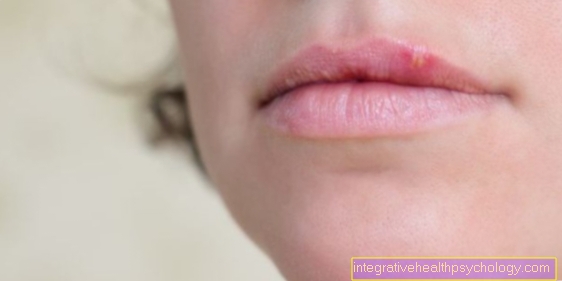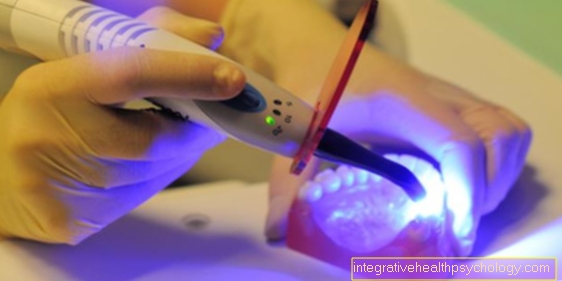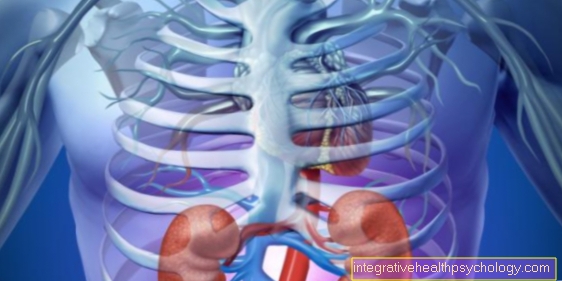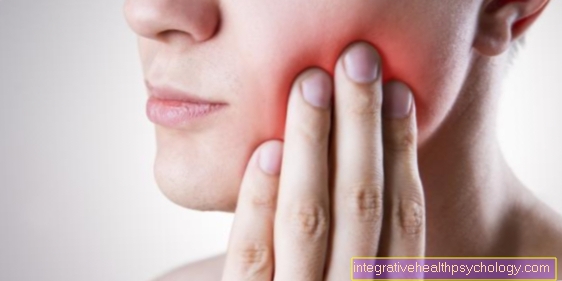Olfactory disorder
Epidemiology
In contrast to the taste disorders that rarely occur in society, olfactory disorders are common. It is assumed that around 79,000 people affected undergo therapy in ENT clinics in Germany every year. The following is a brief overview of the terminology of olfactory disorders.
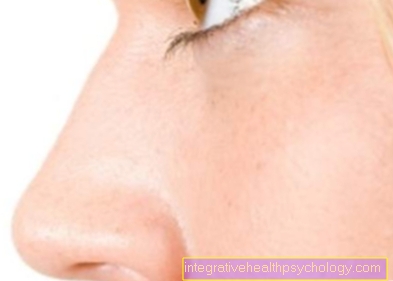
Quantitative olfactory disorders
Hyperosmia: With hyperosmia, one is particularly sensitive to odor stimuli.
Normosmy: Normosmy is only listed for the sake of completeness. There is no change in the perception of smell here. Accordingly, it is the normal state.
Hyposmia: If you suffer from hyposmia, the sense of smell is reduced.
Partial anosmia: As the name suggests, partial anosmia is simply a lack of sensitivity to a certain smell or group of fragrances.
Functional anosmia: In the presence of functional anosmia, there is a marked impairment of the olfactory ability. The residual olfactory ability is no longer important.
Anosmia: In anosmia, the ability to smell is completely lost.
Qualitative olfactory disorders
Parosmia: In the context of parosmia, the smells are perceived differently.
Phantosmia: A certain odor is felt, although there is no odor.
Pseudosmia / olfactory illusion: In the context of a pseudosmia, a smell is imaginatively reinterpreted through strong feelings.
Olfactory intolerance: The person affected subjectively feels an increased sensitivity to smells. Objectively, however, the sense of smell is completely normal.
Causes of olfactory disorders
The causes of a taste disorder can be divided into two broad groups.
One distinguishes sinunasele causes from non-sinunasal Causes.
Sinunasal Causes: With the Term sinunasal we mean things that have their origin in the nose or the sinuses. As a result, this is olfactory System ("olfactory apparatus"), i.e. the olfactory epithelium in the nose and the olfactory tract, which forwards information from peripheral to central, are not affected. There are several reasons for sinus nasal causes of olfactory disorders.
Inflammation that can be triggered by chronic infections in the nose or sinuses or inflammation caused by allergies or a chronic hyperplastic sinusitis with nasal polyps can reduce the ability to smell. But it does not necessarily have to be inflammation that causes an olfactory disorder at the sinunasal level. Mucous membrane swelling, a curvature of the nasal septum or benign or malignant masses of the nose are further sinunasal causes of an olfactory disorder.
Non-sinunasal causes: There are changes in the olfactory epithelium or the olfactory tract, which then lead to an olfactory disorder.
As with sinunasal causes, there are many different possibilities that can lead to a non-sinunasal olfactory disorder. A non-sinunasal olfactory disorder can develop after a viral infection, after a head trauma or after exposure to toxins such as formaldehyde, carbon monoxide or cocaine. Congenital olfactory disorders can also be assigned to this group, as part of the olfactory tract is usually affected here.
Neurological diseases such as multiple sclerosis, Parkinson's disease or Alzheimer's disease can also lead to olfactory disorders. If an olfactory disorder is not caused by one of the non-sinusoidal causes just mentioned, it is considered to be idiopathicwhich means something like "without a known cause".
Diagnosis of olfactory disorders
If an olfactory disorder is suspected, the doctor should take a detailed anamnesis, as important information on a possible cause can be obtained here. Following the anamnesis and the examination, the presence of an olfactory disorder should be checked with tests.
Checking smell:
Our olfactory ability can be checked with two types of tests. On the one hand, there are the so-called subjective test procedures, which require that the patient is fit and can provide information about the smell himself, and on the other hand, there are objective test procedures that are used when the person concerned cannot cooperate himself and cannot provide any information on how it is the case with young children or people with dementia.
Subjective procedures:
Sniffin 'sticks: There are a number of different olfactory sticks, each with a different smell, which are held under the nose for a short period of time. With the help of selection cards the patient can determine the odor just perceived.
UPSI test: According to the location of development, this test has been named the State of Pennsylvania University of Pennsylvania Smell Identification Test (UPSI test). Here the various smells are enclosed in microcapsules which are then released.
CCCRC test: This test also owes its name to its place of origin in the USA. This test consists of significantly more odors than the two test methods described above, which are stored in plastic or glass vials. In addition, it is also checked where the olfactory threshold for the characteristic pungent odor of butanol lies, i.e. from which butanol concentration the person concerned can smell it.
At the Aachen Rhinotest six dissolved fragrances are sprayed into the victim's mouth. This must then determine the perceived smell with the help of six given adjectives (flowery, fruity, resinous, pungent, fruity, spicy). However, the Aachen Rhinotest is rarely used.
Objective procedures:
If one cannot rely on the active cooperation of the patient, then objective test procedures are used. Here there is the possibility of so-called olfactory evoked potentials (OEP). This examination, which is complex in terms of equipment, is only carried out in a few centers, such as in Berlin, Rostock, Cologne, Mainz, Mannheim, Basel or Vienna.
The nerve fibers are stimulated by means of three different fragrances. Phenylethyl alcohol, vanillin and hydrogen sulfide are used as fragrances. The fragrances should actually trigger electrical signals, which are then recorded and displayed via electrodes.
Therapy of olfactory disorders
Therapy for an olfactory disorder always depends on the cause.
If the olfactory disorder is caused by another disease, this must be treated appropriately.
If it occurs as a side effect of a certain drug, this should be discontinued if possible or the dose should be adjusted.
The treatment of a congenital olfactory disorder or an age-related deterioration in olfactory perception is currently not possible. However, olfactory disorders caused by a sinus nasal cause can be managed well therapeutically.
Operative therapy:
If a curvature of the septum, polyps in the nose or benign or malignant tumors of the nose are responsible for the olfactory disorders, these causes can be treated surgically. A turbinate reduction is also possible, because it improves nasal breathing and more air and therefore more fragrances reach the olfactory mucosa.
Medical therapy:
In addition to an operation, if there is a sinunasal olfactory disorder drug therapy may also be considered. Here, corticosteroids are mainly used, which are effective against existing inflammation and also ensure the regression of polyps in the nose.
In addition, they can also provide improvements in patients who have neither inflammation nor polyps.
Corticosteroids can either be given in the form of a nasal spray, i.e. locally, or they can be taken in the form of tablets. They then have a systemic effect - i.e. on the entire organism, which is rather unfavorable in terms of the wide range of side effects, although this form of ingestion is of course more effective. Local application is therefore recommended.
Prognosis and duration of an olfactory disorder
Hardly any specific statement can be made about the duration and prognosis of the olfactory disorder.
These depend on the underlying disease and many other influences:
Age-related or inherited olfactory disorders can hardly be influenced. In the case of injury-related olfactory disorders, however, 10 to 30 percent of patients can recover partially over the years.
If the cause is an infection, 60 percent of patients can expect at least partial recovery of the olfactory function within weeks.
Generally favorable factors for the disappearance of the olfactory disorder are as high a residual olfactory ability as possible, a young age, being a non-smoker, a falsified olfactory impression at the beginning of the disorder as well as no lateral differences in the olfactory function.
In addition, some tests can be used to test the volume of the so-called olfactory bulb (olfactory bulb) and its response to stimuli. The olfactory bulb is a part of the brain where the olfactory nerves of the nose end. A large volume and a strong response are therefore among the favorable factors.
Since the olfactory disorder can also appear as a harbinger of serious neurodegenerative diseases such as Alzheimer's and Parkinson's, its prognosis is extremely uncertain.
Smell disorder after a cold
Smell disorders are common during and after the flu or cold.
The mucous membranes of the nose are often still swollen and the olfactory cells are partially damaged by the infection.
In most cases, the sensory cells regenerate themselves in the following weeks without any action at all.
It is often advisable to take zinc supplements both for the common cold and to support the healing of the olfactory disorder.
Chronic sinusitis, an allergy, polyps or a curvature of the nasal septum wall can be reasons for a chronic olfactory disorder that does not heal on its own due to the permanently swollen mucous membrane.
Olfactory disorder and homeopathy
Most olfactory disorders caused by a cold go away without any action within a few weeks.
The cells of the olfactory organ need this time to regenerate.
Homeopathy can speed up this process a little by offering zinc supplements. Zinc is one of the trace elements that play a key role in wound healing and especially in the regeneration of the olfactory cells.
Of course, a balanced diet with zinc and iron should not be neglected.
Read more on this topic at: Home remedies for a cold, homeopathy for a cold
Olfactory disorder in menopause
Odor disorders also increase in the course of life without any further disease value, so that one can speak of an olfactory disorder of old age.
This has to do with the tiring ability to regenerate the olfactory cells. Hormone-related changes in the mucous membranes occur particularly during menopause in women or during pregnancy. The mucous membranes are then often dry and swell more easily, which can lead to an olfactory disorder.
Read more about this at: Swollen nasal lining
Olfactory disorder in Parkinson's disease
Unfortunately, 95 percent of Parkinson's patients have an olfactory disorder, which is one of the prominent symptoms.
They often appear as an early symptom of Parkinson's disease and can help with the diagnosis.
It is believed that olfactory disorders precede movement disorders by around four to six years. This fact can be used for examinations of relatives with Parkinson's in order to be able to counteract an illness at an early stage.
In contrast to Alzheimer's dementia, however, with Parkinson's disease no prognosis can be made based on the severity of the olfactory disorder.
Olfactory disorder in Alzheimer's disease
Alzheimer's dementia, like Parkinson's disease, is a neurodegenerative disease.
In Alzheimer's disease, similarly severe olfactory disorders are found as in Parkinson's. As with Parkinson's, they are an early symptom of the disease. However, a smell test alone cannot differentiate between the onset of Alzheimer's and Parkinson's disease.
However, a clear connection between the severity of Alzheimer's dementia and the severity of the olfactory disorder can be established here. A smell test can thus contribute to the diagnosis, as can predict the prognosis.
Additional information
Additional information
- Smell
- Cerebrum
- tongue
- Taste disorder
- Vagus nerve





.jpg)



